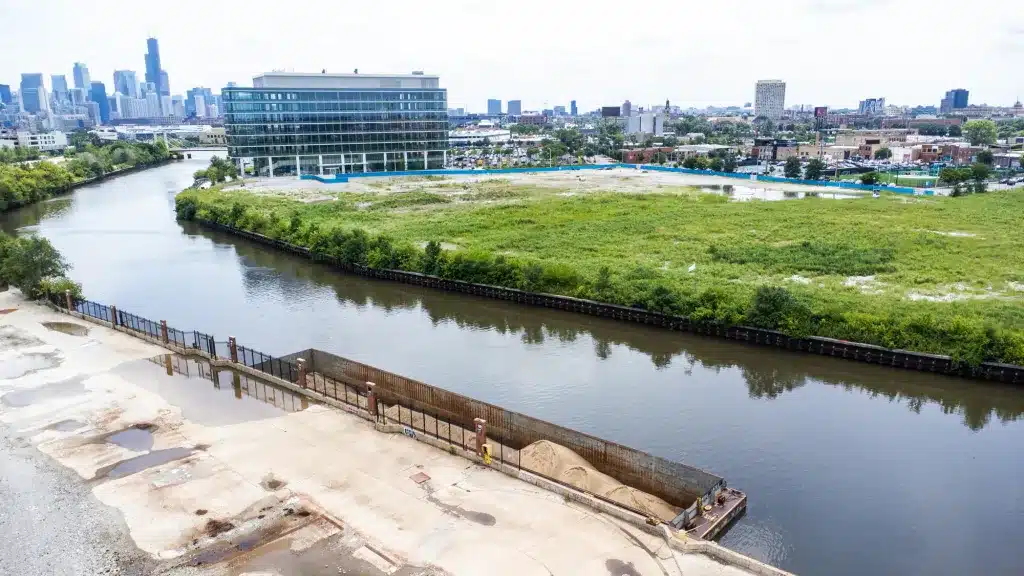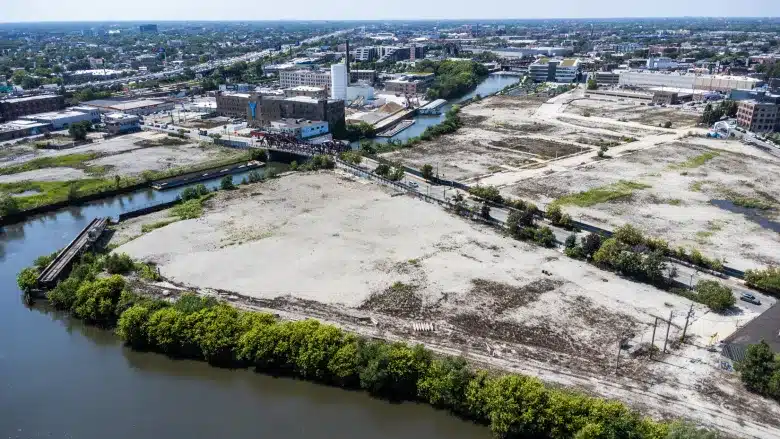Lincoln Yards Stalls: What Sterling Bay’s Setback Means for Chicago’s Neighborhoods and Development Future
Sterling Bay, one of Chicago’s most high-profile developers, has hit a major roadblock. After years of delays and difficulty securing long-term financing, the firm announced that it will transfer the northern portion of its $6 billion Lincoln Yards megaproject to its lender, Bank OZK. For a city known for bold architecture and dynamic urban growth, this handoff signals more than just a financial setback—it reflects a new reality for large-scale real estate development across Chicago.
What Was Lincoln Yards Supposed to Be?
Lincoln Yards was approved in 2019 by the Chicago City Council amid significant public scrutiny. Envisioned as a transformative development that would span 53 acres of former industrial land along the Chicago River, the plan called for 14 million square feet of commercial and residential space, including 6,000 new housing units, office space and lab buildings, retail, and public infrastructure improvements such as green spaces and new bridges.
It was strategically positioned between two of the city’s most affluent neighborhoods—Lincoln Park and Wicker Park—and was expected to reshape the North Side by knitting together underused land, expanding public access to the riverfront, and creating a new job and housing hub.

The Breaking Point
But by 2025, only one major component, the life sciences building at 1229 W. Concord Place—had been completed, and it still sat vacant. Delays began almost immediately after groundbreaking in 2021. Sterling Bay CEO Andy Gloor blamed former Mayor Lori Lightfoot for stalling progress by withholding city support, a move he says set the project back three years. Compounding the political friction were rising interest rates and tightening capital markets, which made long-term financing for large urban projects increasingly elusive.
In a letter to investors, Gloor called the transfer of land to Bank OZK an “unfortunate pause” but emphasized that the firm remains committed to Lincoln Yards in the long term.
Why This Matters for Chicago’s Neighborhoods
The transfer of this portion of Lincoln Yards is more than a project hiccup, it puts thousands of units of housing, millions of square feet of lab and office space, and promised public amenities in limbo. The neighborhoods surrounding the site, Bucktown, Goose Island, and Lincoln Park, were anticipating major infrastructure improvements tied to the development, including new transit connections, greenways, and riverfront access. With Sterling Bay stepping back, those improvements may be delayed or downsized significantly.
Beyond physical development, Lincoln Yards was expected to deliver major economic benefits: new retail traffic, thousands of permanent jobs, and increased foot traffic for local businesses. Now, that economic injection is uncertain. Some nearby residents, who had mixed feelings about the project from the beginning, may see this as a reprieve; others, especially small business owners and property investors, may view the pause as a lost opportunity.
Broader Signals in the Market
The challenges facing Lincoln Yards are not unique. In January, Axios reported that several of Chicago’s largest development projects—including those in the South Loop, Near West Side, and Bronzeville, were being reevaluated due to financial constraints, shifting tenant demand, and political gridlock.
Meanwhile, The Real Deal reported that the $126 million loan tied to the northern parcel had already been written down twice by Bank OZK prior to the handoff, signaling growing concern from the lender.
Even as Fulton Market continues to boom, Chicago’s development environment is bifurcating. High-demand nodes are seeing activity, while megaprojects reliant on speculative financing and long timelines are faltering. It’s a wake-up call to both the public and private sectors that bigger isn’t always better, and flexibility may be the most valuable asset of all.

What Comes Next?
Bank OZK stated its intent to find a new development partner with “sufficient capital and expertise to achieve the site’s potential.” But whether a new sponsor will stick to Sterling Bay’s original vision or opt for a smaller, phased approach remains to be seen.
Urban planning experts suggest the next phase of Lincoln Yards—if and when it resumes—could look very different from what was originally pitched in 2018. “There’s a real chance here to rethink what the neighborhood needs most,” said one land use analyst in an interview with the Chicago Tribune. “This doesn’t have to be a setback—it could be a pivot toward a more sustainable, community-led approach.”
City officials now have the opportunity to revisit zoning, infrastructure priorities, and public benefit agreements tied to the land transfer. For neighborhoods around Lincoln Yards, community input and local engagement will be critical in shaping what comes next.
The Role of Real Estate Professionals in a Changing Landscape
The Lincoln Yards pause also highlights the need for grounded, well-informed real estate decision-making. Developers, lenders, and investors must now navigate a city where mega-projects carry high risk and neighborhoods expect higher levels of accountability. This landscape demands strategic guidance.
For those looking to understand where Chicago’s development market goes from here—whether through investment, acquisition, or repositioning—there’s no substitute for working with seasoned commercial real estate agents in Chicago who understand both the macroeconomic forces and the hyperlocal nuances that shape this city’s built environment.

